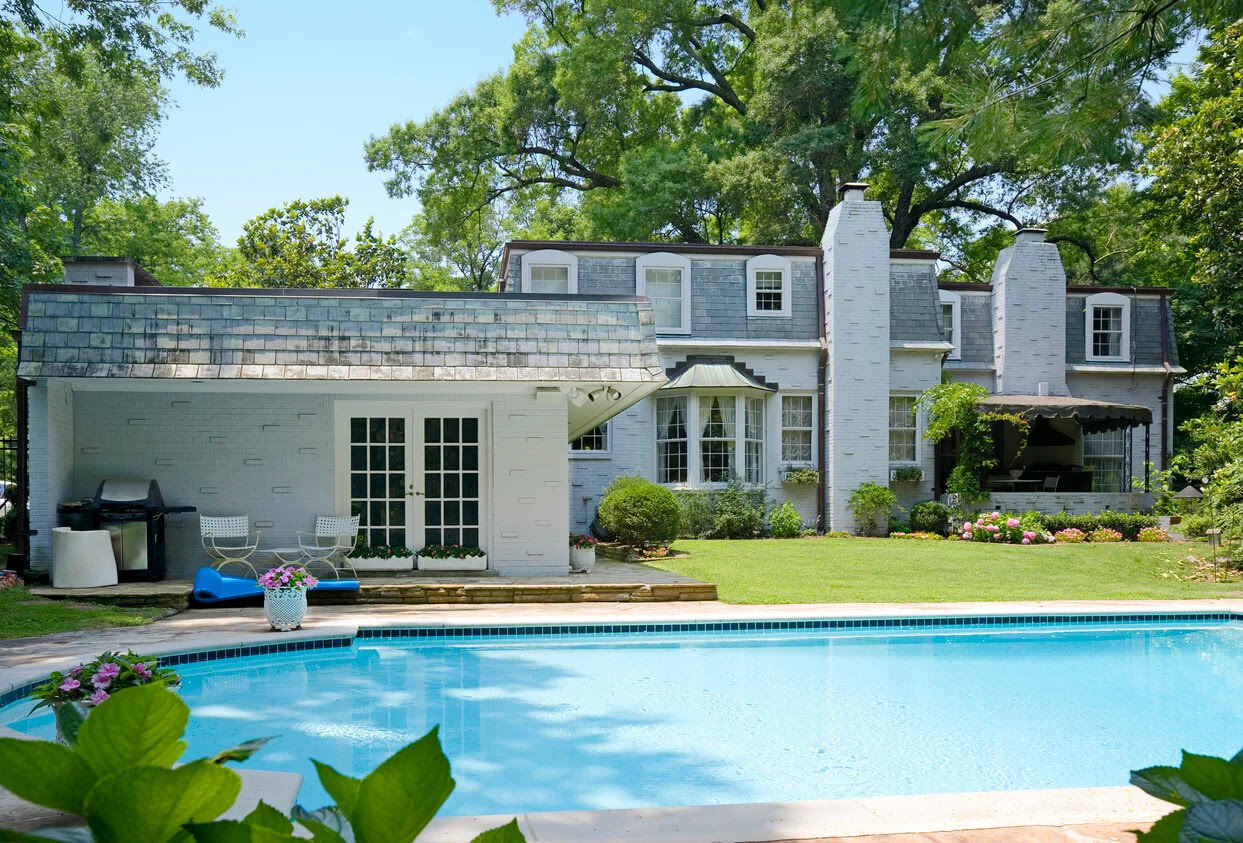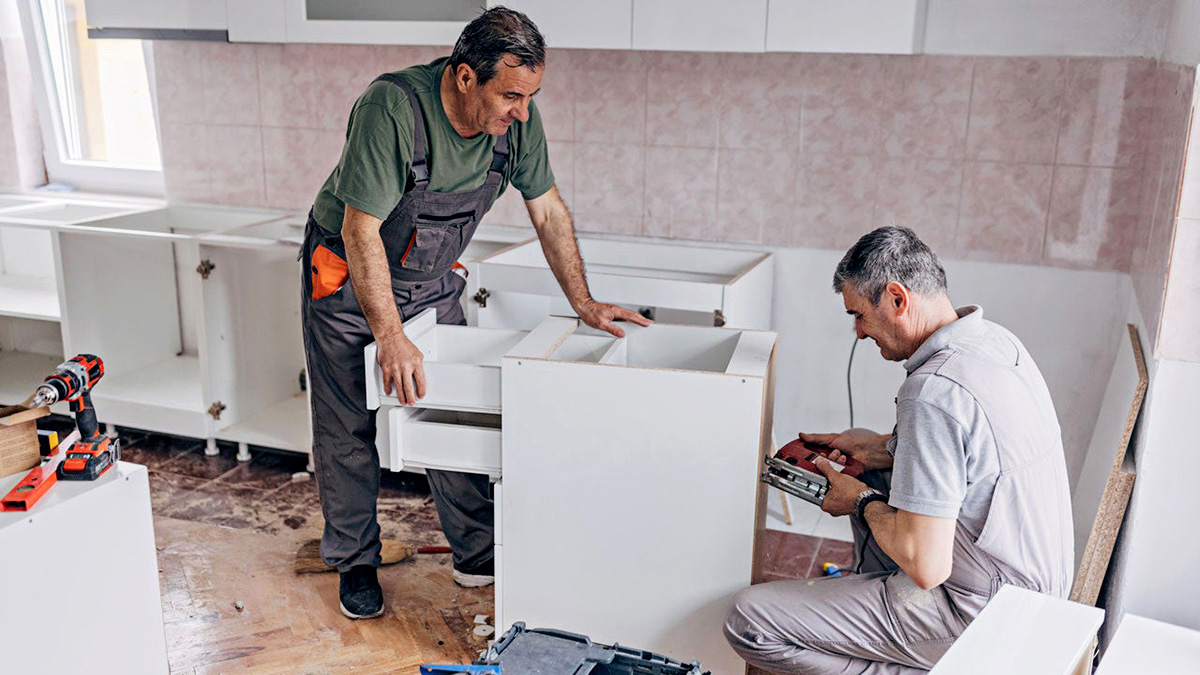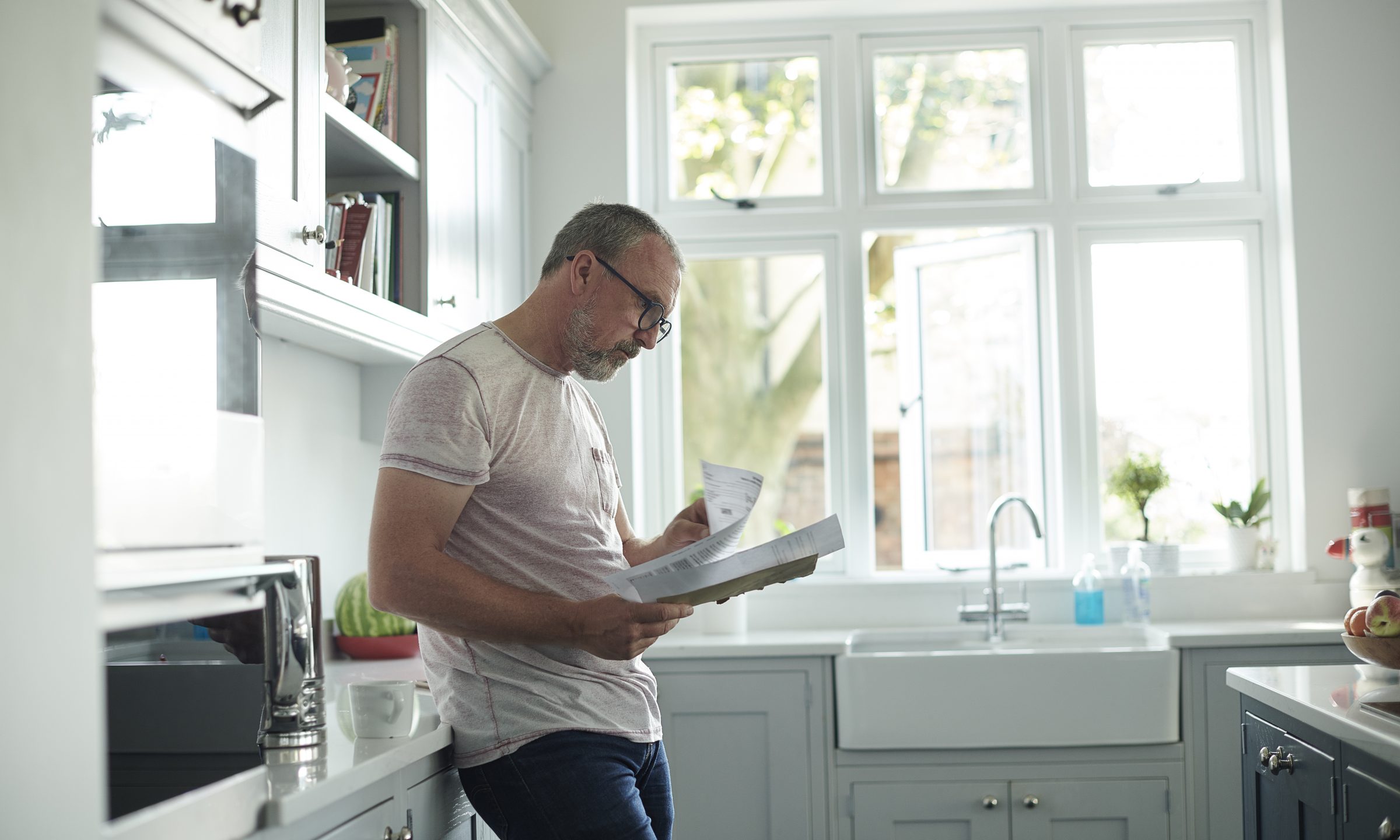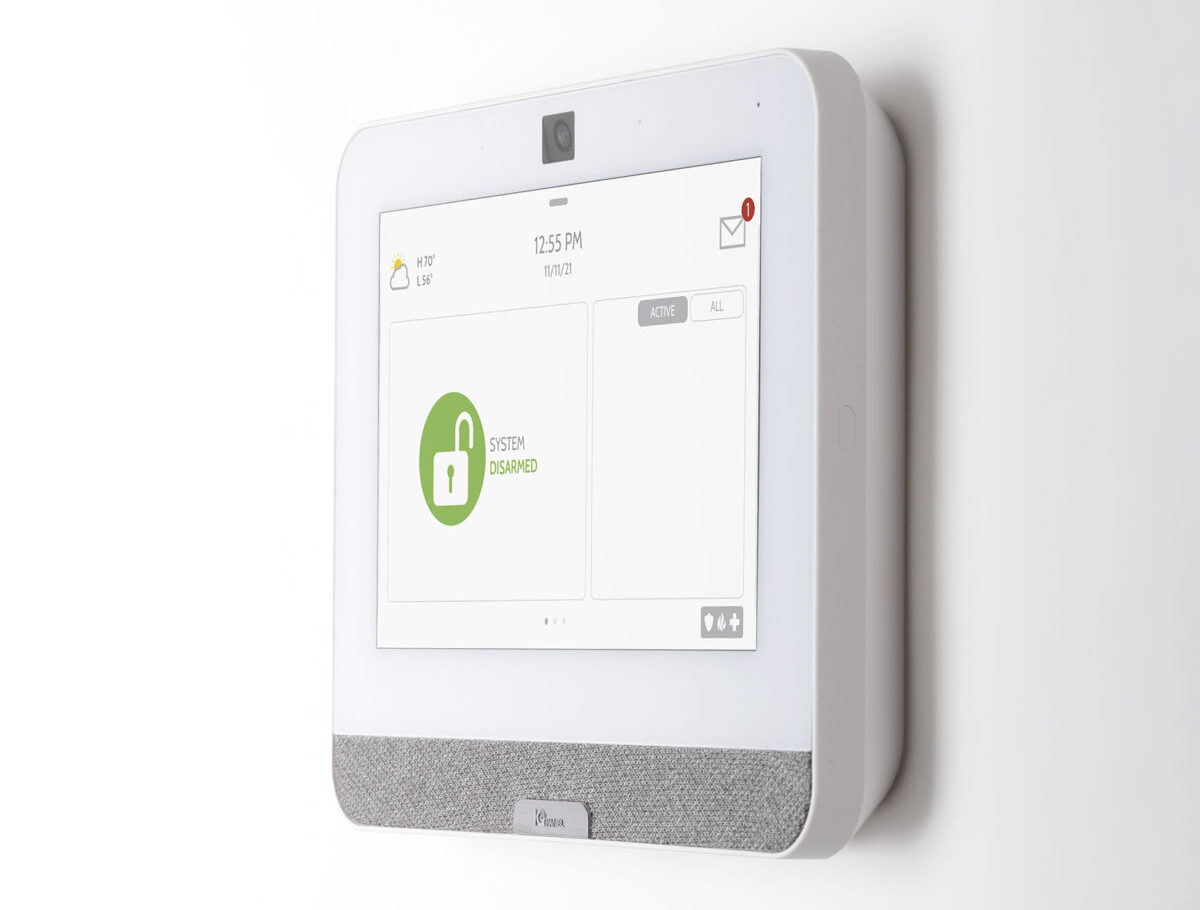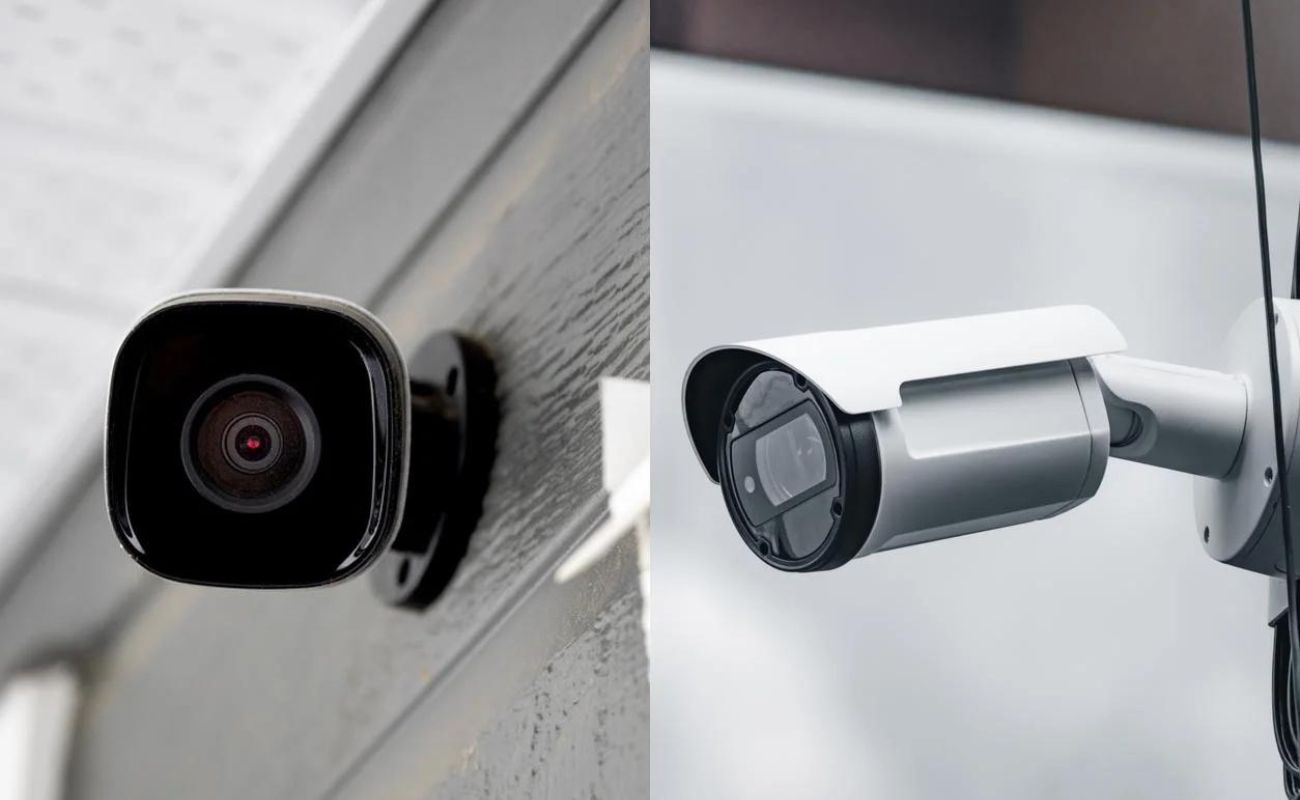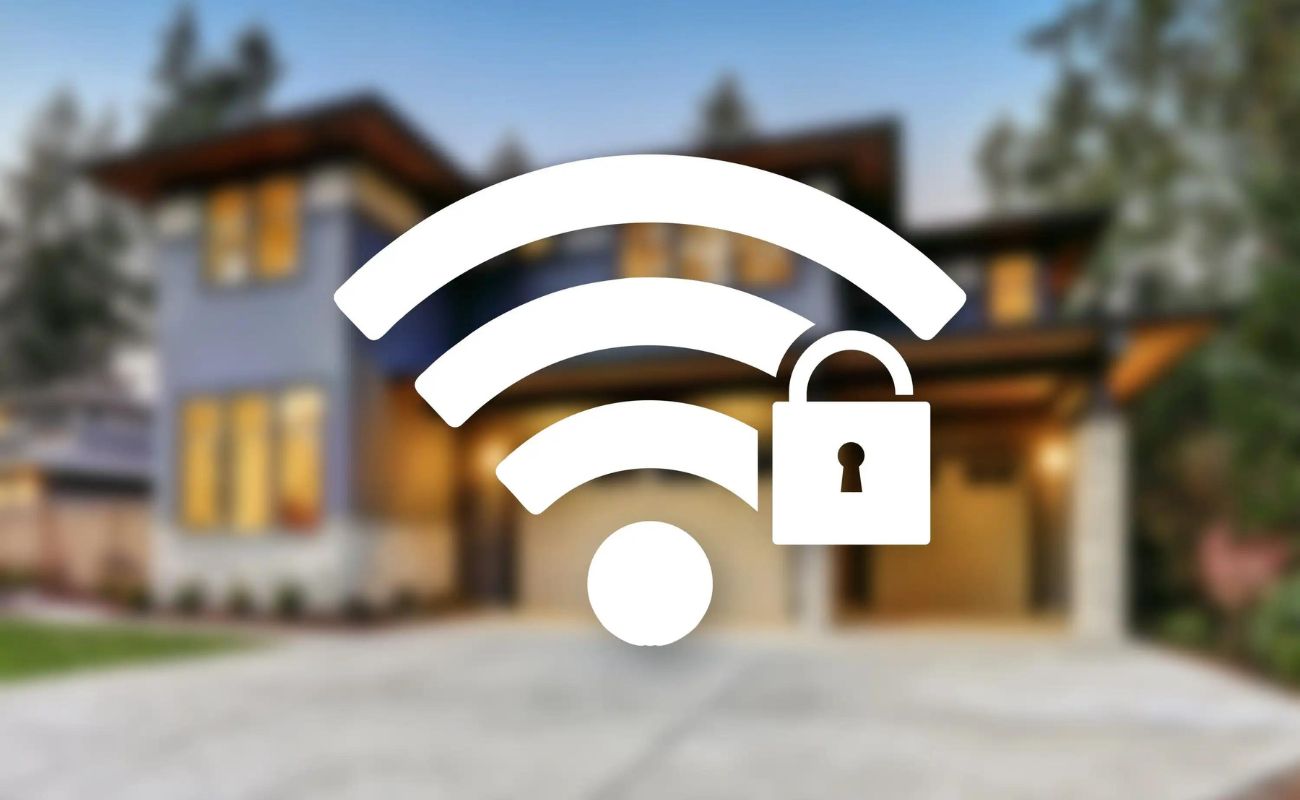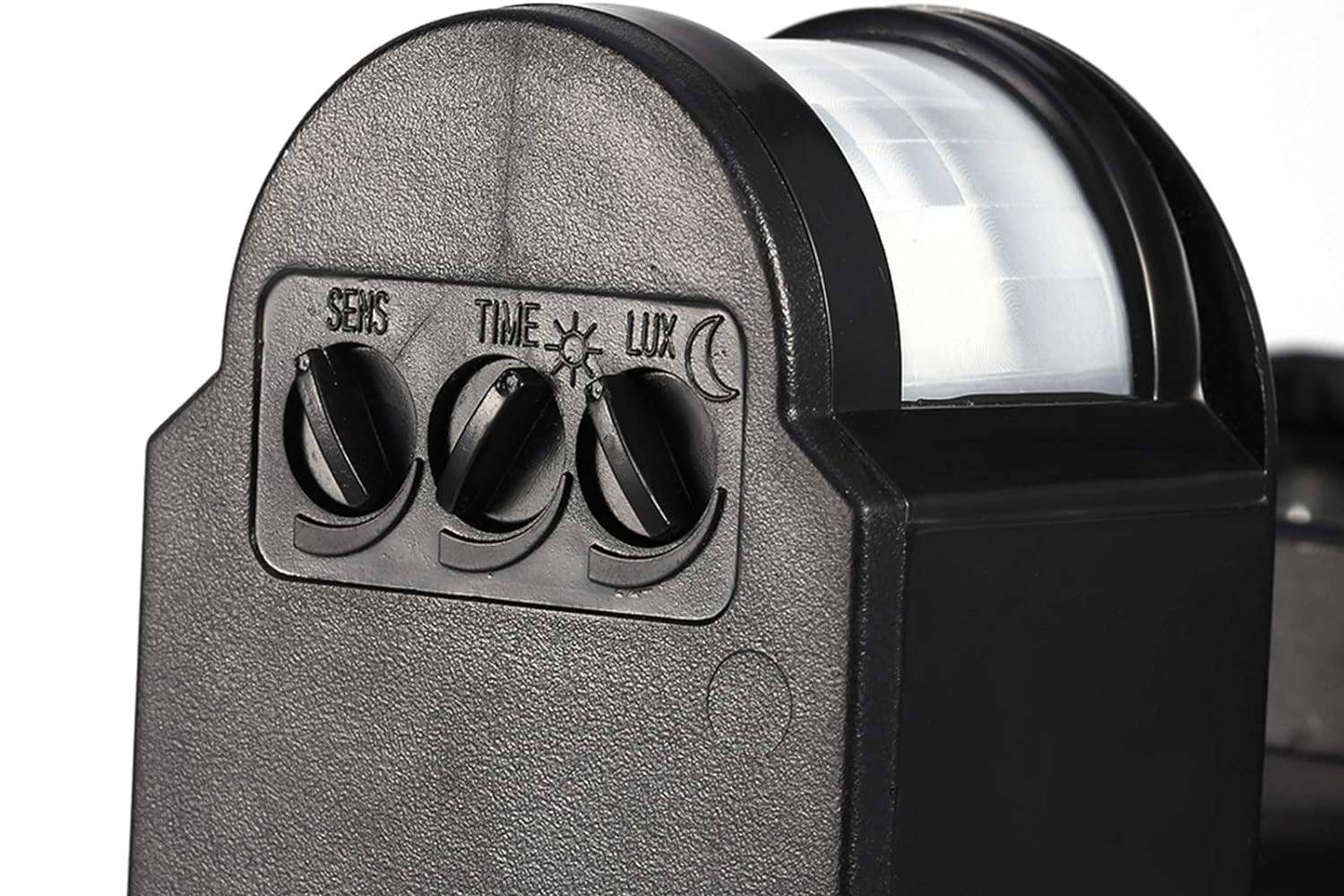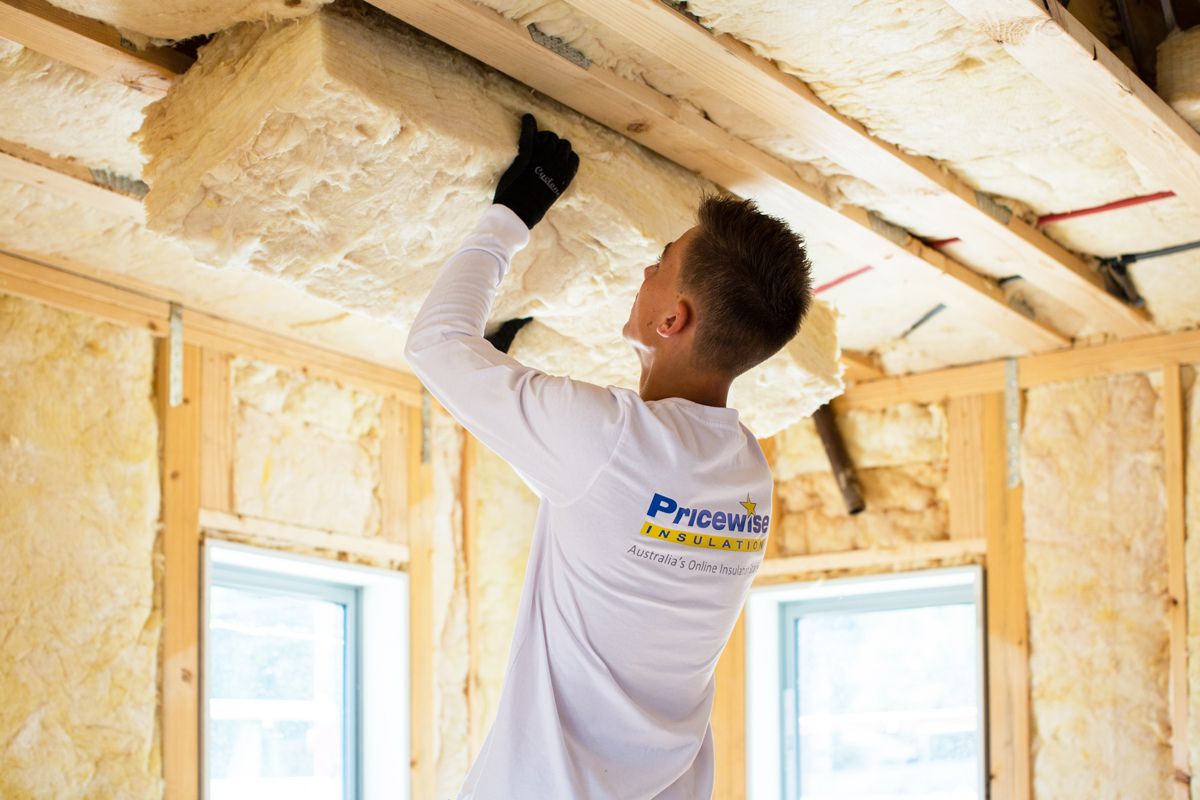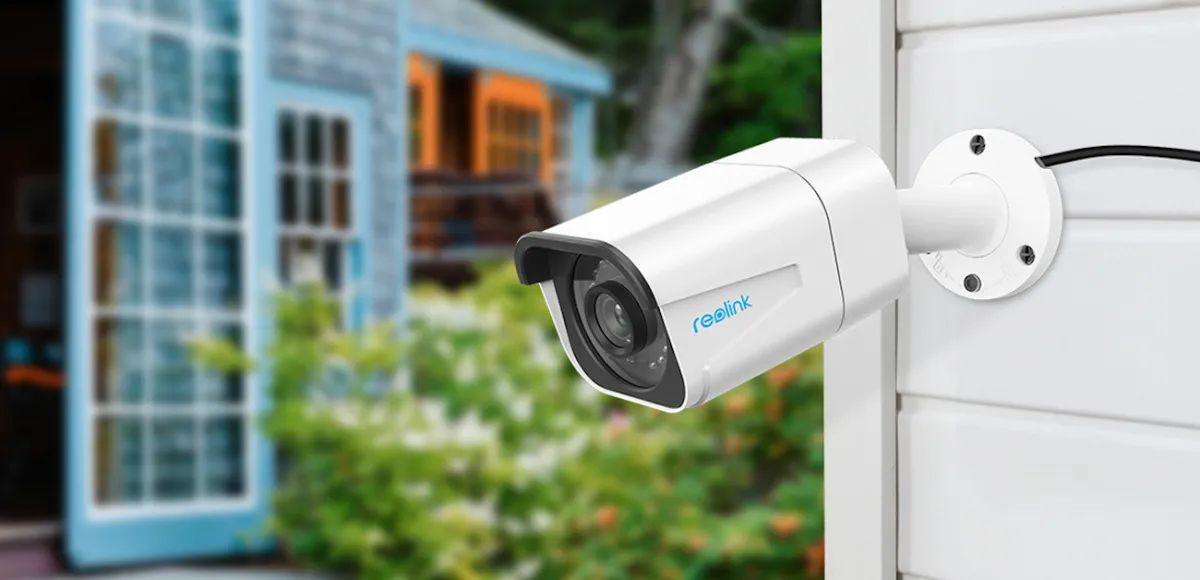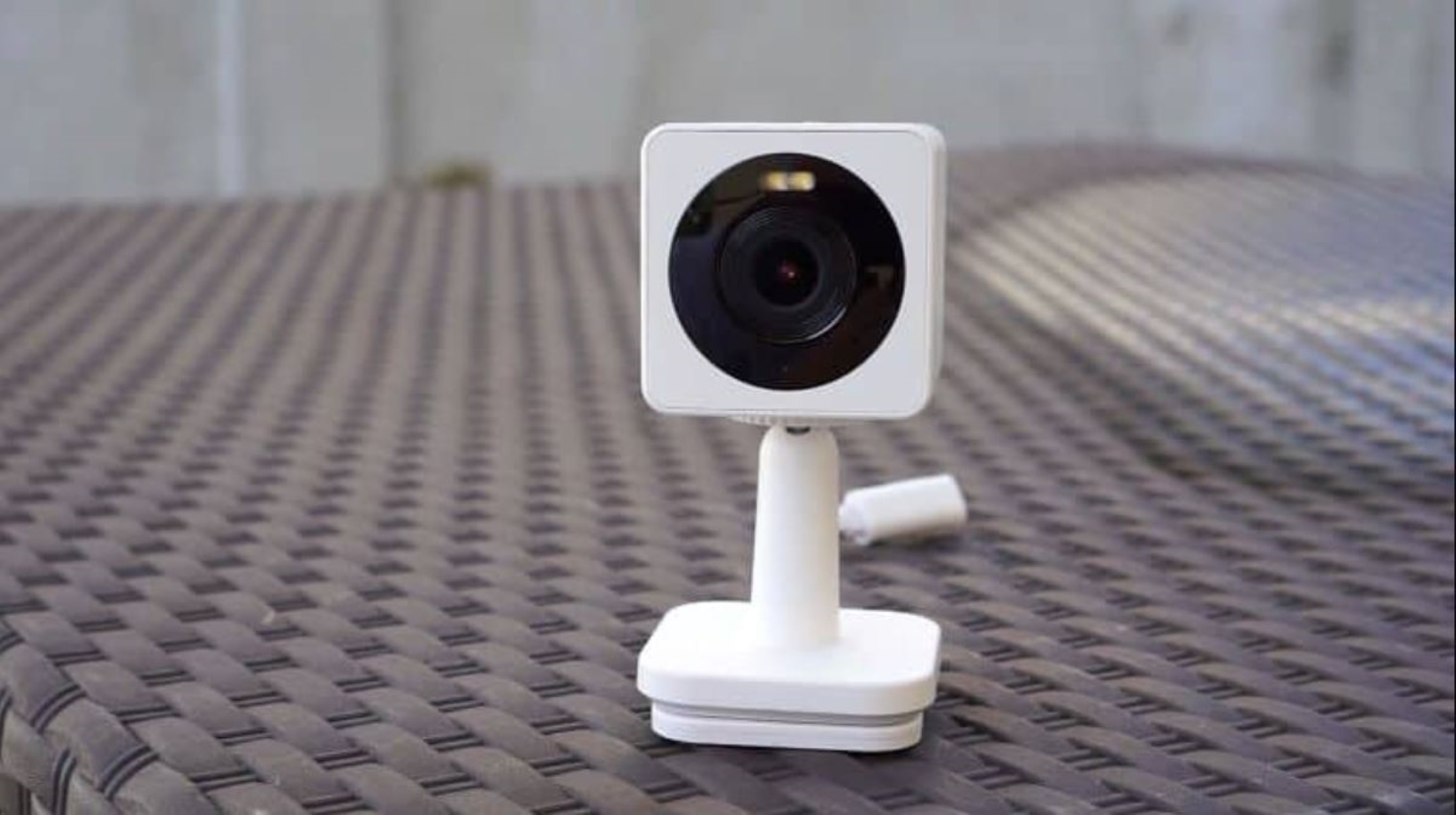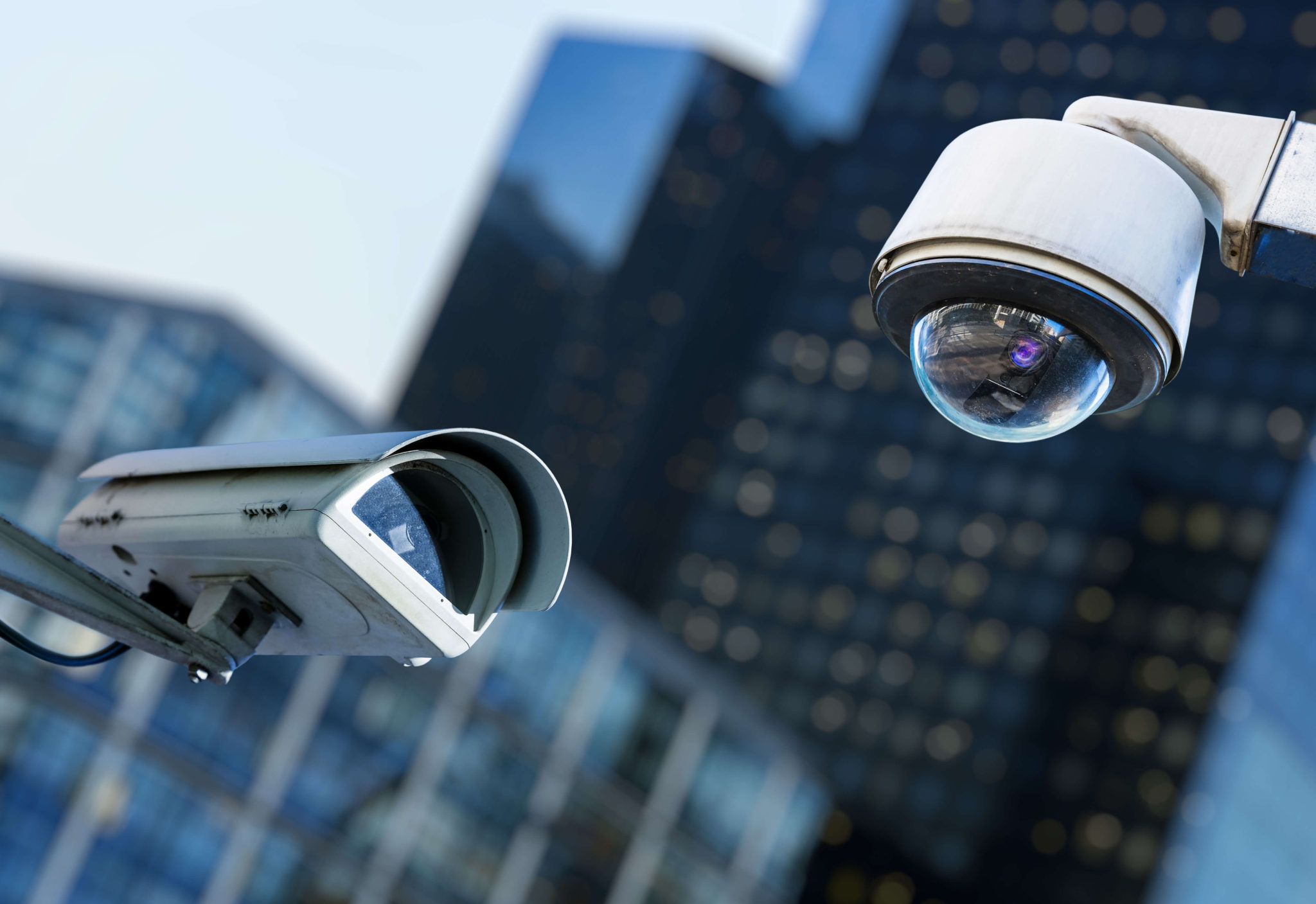Home>Home Security and Surveillance>How To Increase Home Security
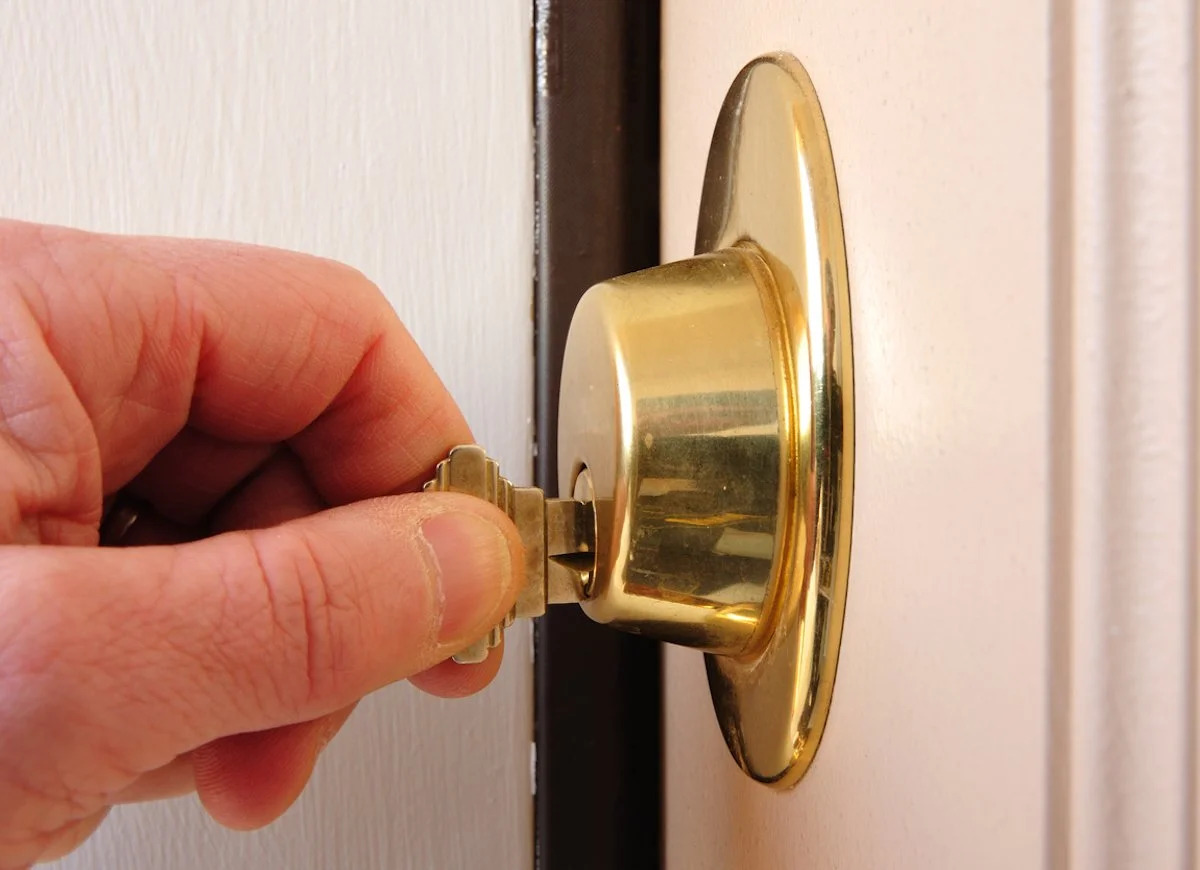

Home Security and Surveillance
How To Increase Home Security
Modified: March 6, 2024
Discover effective ways to increase your home security and surveillance with our comprehensive guide. Safeguard your home and loved ones today with our tips and recommendations.
(Many of the links in this article redirect to a specific reviewed product. Your purchase of these products through affiliate links helps to generate commission for Storables.com, at no extra cost. Learn more)
Introduction
Welcome to our comprehensive guide on how to increase home security. In today’s uncertain world, it is essential to take proactive measures to protect our homes and loved ones. Whether you are a homeowner or a renter, investing in a robust home security system can provide you with peace of mind and ensure the safety of your property.
Assessing your current home security measures is the first step in strengthening your defense against potential threats. By identifying vulnerabilities and understanding the key components of an effective home security system, you will be better equipped to make informed decisions and implement the necessary upgrades.
In this guide, we will explore various strategies and technologies that can enhance your home security. From choosing the right locks to installing outdoor security lighting, securing windows and doors, and integrating surveillance cameras, we will cover it all.
Additionally, we will discuss the importance of creating a home security plan and incorporating environmental and fire protection measures into your overall system. Finally, we will explore how smart technology can further enhance your home security, providing you with advanced control and monitoring capabilities.
By the end of this guide, you will have a comprehensive understanding of how to increase your home security and be well-equipped to take the necessary steps to protect your loved ones and possessions.
Key Takeaways:
- Assess your home’s security by checking for weak points in doors, windows, and lighting. Consider a security system with cameras, sensors, and alarms for added protection.
- Enhance home security with smart technology like smart locks, cameras, and lighting. Create a security plan, and prepare for environmental and fire emergencies.
Assessing Your Current Home Security
Before diving into the various ways to increase your home security, it’s important to assess your current setup. By identifying any weaknesses or areas of improvement, you can effectively tailor your security enhancements to suit your specific needs. Here are some key factors to consider when assessing your current home security:
- Exterior Perimeter: Start by examining the exterior of your home. Look for any visible vulnerabilities such as weak points in fencing, broken windows, or unsecured entry points. Take note of any overgrown shrubs or trees that might provide hiding spots for potential intruders.
- Doors and Windows: Inspect the quality and condition of your doors and windows. Are the locks sturdy and functioning properly? Consider upgrading to deadbolt locks and reinforcing weak or hollow doors. Ensure that all windows are equipped with secure locks or additional security measures such as window bars or security film.
- Lighting: Adequate lighting plays a crucial role in deterring burglars. Walk around your property at night and assess the outdoor lighting situation. Are there any dark areas that could benefit from additional lighting, such as pathways, driveways, or entrances? Consider installing motion sensor lights that activate when movement is detected.
- Security System: If you already have a security system in place, evaluate its effectiveness. Test your alarms, sensors, and cameras to ensure they are in proper working order. If you don’t have a security system, now is the time to consider investing in one. Look for features such as 24/7 monitoring, smartphone integration, and remote access.
- Neighborhood: Take into account the security of your neighborhood. Are there any recurring incidents of burglary or vandalism? Stay informed about any security concerns in your area by joining local neighborhood watch programs or online communities.
By thoroughly assessing your current home security, you will have a clearer understanding of the areas that need improvement. This evaluation will help you prioritize and focus on the most critical aspects to enhance your overall security posture.
Key Components of Home Security Systems
A well-designed home security system consists of various components working together to provide comprehensive protection. Understanding these key components will help you make informed decisions when selecting a security system for your home. Here are the essential elements to consider:
- Control Panel: The control panel serves as the central hub of your security system. It allows you to arm and disarm the system, view alerts, and control various features. Look for a control panel that is easy to use and offers advanced functionalities like touchscreen interfaces and smartphone integration.
- Door and Window Sensors: These sensors detect when doors or windows are opened or closed. They are typically installed on entry points and trigger an alarm if unauthorized access is detected.
- Motion Sensors: Motion sensors detect movement within specific areas of your home. They are useful for monitoring large spaces and can trigger alarms if an intruder is detected. Look for sensors with adjustable sensitivity levels to reduce false alarms.
- Security Cameras: Surveillance cameras are crucial for capturing visual evidence and deterring potential burglars. High-definition cameras with night vision capabilities provide clear footage, even in low-light conditions. Consider camera placement to cover vulnerable areas such as entrances, driveways, and key access points.
- Alarm System: A loud alarm is an effective deterrent and can alert you and your neighbors of a possible break-in. Look for an alarm system that operates on multiple levels, such as a siren, strobe lights, and the ability to connect to professional monitoring services.
- Environmental Sensors: Besides protecting against intruders, home security systems can also monitor for environmental hazards such as smoke, carbon monoxide, and water leaks. These sensors provide early warnings and can potentially save lives and prevent property damage.
- Mobile Access: Many modern security systems offer mobile access, allowing you to monitor and control your system remotely through a smartphone app. With mobile access, you can receive real-time notifications, view camera feeds, and arm or disarm the system from anywhere.
When selecting a home security system, consider the specific needs of your home and lifestyle. Consult with a reputable security provider to ensure you choose the right components that offer the level of protection you desire.
Choosing the Right Locks for Your Home
When it comes to home security, choosing the right locks is one of the most important decisions you will make. The strength and effectiveness of your locks play a vital role in preventing unauthorized access to your home. Here are some factors to consider when selecting locks:
- Deadbolt Locks: Deadbolt locks are the most secure type of lock and should be installed on all exterior doors. Look for deadbolts with at least a one-inch throw, hardened steel construction, and anti-saw pins to resist forced entry.
- Keyless Entry: Consider opting for keyless entry systems that use electronic keypads or smart locks. With keyless entry, you eliminate the risk of lost or stolen keys, and you can grant temporary access to family members, friends, or service providers with unique codes.
- Grade of Locks: Locks are typically assigned grades by the American National Standards Institute (ANSI). Grade 1 locks offer the highest level of security and are recommended for residential use. Grade 2 locks are suitable for most residential applications, while Grade 3 locks are more suitable for low-security environments.
- Lock Cylinder: Pay attention to the type of lock cylinder used in the locks you choose. Look for locks with hardened steel cylinders and security pins to prevent picking and drilling.
- Additional Security Features: Some locks come with additional security features such as anti-bump technology, which prevents lock bumping, a common method used by burglars to bypass traditional pin and tumbler locks. Consider locks with reinforced strike plates and security plates for added strength.
- Professional Installation: While some locks can be installed as DIY projects, it is often advisable to have a professional locksmith install and ensure the proper functioning of your locks. They can also provide expert advice on the best locks for your specific needs.
Remember, the strength of your locks can significantly impact the security of your home. Investing in high-quality, robust locks will provide an added layer of defense against potential intruders.
Installing Outdoor Security Lighting
Outdoor security lighting is an essential aspect of home security. A well-lit exterior can help deter criminals and provide you with better visibility in and around your property. Here are some tips to consider when installing outdoor security lighting:
- Strategic Placement: Identify key areas that require lighting, such as entryways, driveways, and pathways. Focus on areas with limited visibility or potential hiding spots for intruders.
- Motion Sensor Lights: Install motion sensor lights that activate when movement is detected. These lights startle potential intruders and draw attention to their presence. Look for motion sensor lights with adjustable sensitivity and range settings to minimize false activations.
- Lighting Technology: Consider using LED lights for outdoor security lighting. LED lights are energy-efficient, have a longer lifespan, and produce bright illumination. They are also available in a variety of options, including floodlights, spotlights, and wall-mounted fixtures.
- Lighting Levels: Aim for a balance between sufficient illumination and avoiding light pollution. Choose lights with adjustable brightness levels to meet your specific needs. Brighter lights may be necessary for high-traffic areas, while dimmer lights may be suitable for less frequented spaces.
- Lighting Timers: Install timers or use smart lighting controls to automate your outdoor security lighting. This ensures that your lights turn on and off at specific times, even when you’re not home, creating the illusion of an occupied residence.
- Consider Solar Powered Lights: Solar-powered lights are an eco-friendly and cost-effective option for outdoor security lighting. They rely on solar energy for power, eliminating the need for electrical wiring and reducing electricity costs.
- Regular Maintenance: Regularly inspect your outdoor lights to ensure they are functioning correctly. Replace any burnt-out bulbs promptly to maintain optimal visibility and deterrence.
Remember, a well-lit exterior creates a sense of safety and protects your home from potential intruders. By strategically installing outdoor security lighting, you enhance the overall security of your property while adding convenience and peace of mind.
Securing Your Windows and Doors
Your windows and doors are the primary points of entry for potential intruders. Strengthening these access points is crucial for enhancing your home security. Here are some effective measures to secure your windows and doors:
Windows:
- Window Locks: Install secure window locks on all accessible windows. There are various types available, including sash locks, keyed locks, and window security film, which reinforces the glass and makes it more difficult to break.
- Reinforced Glass: Consider replacing standard glass with laminated or tempered glass for added strength. These types of glass are more resistant to breakage and provide an extra barrier against forced entry.
- Window Bars or Grilles: Install sturdy window bars or grilles on ground-level windows or windows that are easily accessible from balconies or other structures. These act as both visual deterrents and physical barriers.
- Window Sensors: Consider integrating window sensors into your home security system. These sensors detect when a window is opened or broken, triggering an alarm and alerting you of a potential breach.
- Landscaping: Trim back any shrubs or trees near windows, as they can provide cover for intruders trying to gain entry. Maintain clear lines of sight to allow neighbors and passersby to see any suspicious activity.
Doors:
- Deadbolt Locks: Install deadbolt locks on all exterior doors. Choose high-quality deadbolts with at least a one-inch throw and a hardened steel bolt.
- Door Reinforcements: Consider reinforcing your doors with security plates or strike plates. These metal plates add extra strength to the door frame and prevent kick-ins or forced entry attempts.
- Door Viewers: Install a door viewer or peephole to easily see who is outside without fully opening the door. This allows you to verify the identity of visitors before granting them access.
- Door Sensors: Include door sensors in your security system to detect when a door is opened or breached. This triggers an alarm and alerts you and the monitoring service if applicable.
- Smart Locks: Consider upgrading to smart locks for added convenience and security. Smart locks allow you to lock and unlock your doors remotely, grant temporary access codes to others, and receive real-time alerts on your smartphone.
By taking these steps to secure your windows and doors, you significantly reduce the risk of unauthorized entry. Remember to regularly inspect and maintain locks, sensors, and other security measures to ensure they remain in proper working order.
Install motion sensor lights around the perimeter of your home to deter potential intruders and alert you to any movement outside.
Enhancing Home Security with Surveillance Cameras
Surveillance cameras are valuable tools for enhancing home security by providing visual monitoring and deterrence. With advancements in technology, security cameras have become more affordable and accessible for homeowners. Here are some key considerations for incorporating surveillance cameras into your home security system:
- Camera Placement: Strategically place cameras in areas that cover the entrances, driveway, and other vulnerable spots around your property. This includes front and back doors, garage doors, windows, and any blind spots that may provide hiding spots for potential intruders.
- Types of Cameras: There are various types of security cameras available, including wired, wireless, and IP cameras. Wired cameras require cabling for power and data transmission, while wireless cameras operate on batteries or connect to your Wi-Fi network. IP cameras provide high-definition video quality and can be accessed remotely via the internet.
- Night Vision: Opt for cameras equipped with night vision capabilities to ensure clear footage even in low-light conditions. Infrared (IR) or low-light cameras are specifically designed to capture images in the dark.
- Resolution and Field of View: Choose cameras with high-resolution capabilities to capture clear details. The field of view determines how much area the camera can cover, so consider cameras with wide-angle lenses or the ability to pan, tilt, and zoom (PTZ) to cover larger areas.
- Storage and Remote Access: Determine how and where the camera footage will be stored. Options include cloud storage, on-site storage devices, or network video recorders (NVRs). Additionally, consider cameras that offer remote access through mobile apps or web interfaces, allowing you to monitor live feeds and playback recorded footage from anywhere.
- Camera Notification and Integration: Look for cameras that can send real-time alerts to your smartphone or email when motion is detected. Integration with your home security system or smart hub allows for seamless control and automation of your cameras with other devices.
- Visible vs. Hidden Cameras: The presence of visible cameras can act as a visual deterrent to potential intruders. However, hidden cameras may be useful for discreetly monitoring specific areas. Be mindful of local laws and regulations regarding the use of hidden cameras.
When installing surveillance cameras, proper placement, camera types, and other factors must be considered. Consult with a professional security provider for expert advice tailored to your specific needs and to ensure optimal coverage and functionality of your camera system.
Creating a Home Security Plan
Having a well-defined home security plan is essential for effectively protecting your home and loved ones. A comprehensive security plan takes into account various aspects of home security and establishes guidelines and practices to follow. Here are key steps to create a home security plan:
- Risk Assessment: Conduct a thorough risk assessment of your property. Identify potential vulnerabilities, such as weak points in doors and windows, lack of proper lighting, or inadequate security measures. This assessment will help you prioritize areas that need improvement.
- Establish Security Measures: Implement the necessary security measures to address the identified vulnerabilities. This may include installing robust locks, surveillance cameras, alarm systems, and motion sensor lighting. Consider factors like budget, personal preferences, and the advice of security professionals.
- Emergency Communication: Establish a communication plan for emergencies. Share emergency contact information with trusted neighbors or family members and discuss protocols for alerting authorities in case of a security breach or other emergencies.
- Secure Valuables: Identify and secure your valuable possessions. Consider investing in a safe or lockbox to store important documents, jewelry, cash, and other valuable items. Take inventory and document your belongings, including serial numbers and photographs.
- Neighborhood Watch: Join or form a neighborhood watch program. Collaborating with neighbors can provide an additional layer of security through shared information and vigilance. Regularly communicate with your neighbors about any security concerns or incidents in the area.
- Family Security Practices: Establish security practices within your household. Teach family members about basic home security measures like locking doors and windows, setting alarms, and using surveillance systems. Create a routine for checking the security of your home before leaving or going to bed.
- Security Awareness: Educate yourself and your family about common security threats and how to stay vigilant. Stay updated on local crime trends and be aware of any new tactics used by burglars. Be cautious about sharing sensitive information about your home and routines on social media.
- Regular Maintenance: Regularly inspect and maintain your security equipment. Replace batteries, test alarms, and clean surveillance cameras for optimal performance. Additionally, update your security plan as needed, considering changes in your home, neighborhood, or family dynamics.
A well-crafted home security plan provides a roadmap for protecting your home and helps ensure that everyone in your household is familiar with security procedures. Regularly review and update your plan to adapt to any changes or evolving security needs.
Environmental and Fire Protection
When it comes to home security, it’s important not only to protect against intruders but also to be prepared for environmental hazards and fire emergencies. Integrating environmental and fire protection measures into your overall security system enhances the safety of your home. Here are some key considerations to prioritize environmental and fire protection:
- Smoke Detectors: Install smoke detectors in every room, especially in sleeping areas. Test them regularly and replace batteries as needed. For additional protection, consider interconnected smoke detectors, so when one alarm sounds, all alarms in the house are triggered.
- Carbon Monoxide Detectors: Carbon monoxide is a silent, odorless gas that can be deadly. Install carbon monoxide detectors in areas near fuel-burning appliances and sleeping areas. Regularly test the detectors and replace them according to manufacturer recommendations.
- Fire Extinguishers: Keep fire extinguishers on each level of your home, especially in the kitchen and near potential fire hazards. Make sure everyone in the household knows how to use them. Regularly check the pressure levels and have them serviced or replaced as needed.
- Fire Escape Plan: Create a detailed fire escape plan for your household. Identify two escape routes from each room and establish a safe meeting point outside the house. Practice the escape plan regularly to ensure everyone knows what to do in case of a fire.
- Home Sprinkler System: Consider installing a home sprinkler system for additional fire protection. Sprinkler systems can quickly suppress and control fires, giving occupants more time to evacuate and reducing property damage.
- Fire-Resistant Materials: Use fire-resistant materials when constructing or renovating your home. This includes fire-resistant roofing materials, siding, and insulation. Additionally, consider fire-resistant window treatments and furniture upholstery.
- Environmental Sensors: Integrate environmental sensors into your security system to detect water leaks, temperature changes, and other environmental hazards. These sensors can send alerts to your smartphone, allowing you to take immediate action and prevent costly damage.
- Home Insurance: Review your home insurance policy to ensure it provides adequate coverage for fire and other environmental hazards. Regularly update your policy to reflect any changes in your home or valuable possessions.
Remember, being prepared for environmental hazards and fire emergencies is crucial for safeguarding your home and loved ones. By incorporating these measures into your home security plan, you can mitigate risks and ensure the well-being of your household.
Read more: How Secure Are Wireless Security Systems
Enhancing Home Security with Smart Technology
In an increasingly connected world, smart technology has revolutionized the way we approach home security. With the integration of smart devices and automation, homeowners now have the ability to enhance their security systems and gain greater control and peace of mind. Here are some ways you can enhance home security with smart technology:
- Smart Locks: Smart locks allow you to lock and unlock your doors remotely, eliminating the need for physical keys. With keyless entry, you can grant temporary access to family members, friends, or service providers via unique access codes. You can also receive real-time alerts when someone enters or exits your home.
- Smart Security Systems: Smart security systems integrate various components such as cameras, motion sensors, and door/window sensors into a centralized hub. These systems can be controlled remotely through mobile apps or web interfaces. Real-time alerts and notifications are sent to your smartphone, keeping you informed of any activity or potential security breaches.
- Smart Cameras: Smart cameras provide advanced features such as facial recognition, person detection, and object tracking. These cameras can send notifications when specific events occur, such as a person approaching the front door or a package being delivered. They also offer live streaming and video recording options for convenient monitoring and playback.
- Smart Lighting: Smart lighting systems allow you to control and automate indoor and outdoor lights. With features like scheduling, motion detection, and remote access, you can create the illusion of an occupied home even when you’re away. This deters potential intruders by giving the impression that someone is present.
- Smart Alarms: Smart alarm systems provide advanced features such as geofencing and customizable alerts. Geofencing triggers alarm systems based on your location, ensuring that the system is armed when you leave the house and disarmed upon your return. Customizable alerts allow you to receive notifications for specific events or activities.
- Smart Monitoring: Professional monitoring services can be integrated with smart security systems, providing an added layer of protection. These services monitor your home 24/7 and can dispatch emergency responders in the event of a security breach or detected emergency.
- Smart Voice Assistants: Voice assistants like Amazon Alexa or Google Assistant can be integrated with your security system, allowing you to control various features through voice commands. This includes checking camera feeds, locking doors, or arming the security system, providing convenience and hands-free control.
Smart technology offers convenience, enhanced control, and increased security for your home. By integrating these smart devices into your security system, you can be proactive in safeguarding your property and loved ones.
Conclusion
Investing in home security and surveillance is crucial for ensuring the safety and protection of your property, belongings, and loved ones. By assessing your current security measures, addressing vulnerabilities, and implementing the right solutions, you can significantly enhance your home’s security posture.
Throughout this comprehensive guide, we have explored various aspects of home security. We discussed the importance of assessing your current security, choosing the right locks for your doors and windows, installing outdoor security lighting, and integrating surveillance cameras into your system. We also emphasized creating a home security plan, considering environmental and fire protection measures, and leveraging smart technology to enhance your security capabilities.
Remember that a robust home security system is not a one-size-fits-all solution. It’s essential to customize your security measures to fit your specific needs and circumstances. Consulting with security professionals can provide valuable insights and guidance to ensure you make informed decisions.
By being proactive, vigilant, and using modern security technologies, you can establish a strong defense against potential threats. Regular maintenance, staying updated on security trends, and practicing good security habits are equally important in maintaining an effective home security system.
Ultimately, the goal is to create a secure and protected environment for you and your loved ones. With the right knowledge, tools, and strategies in place, you can enjoy peace of mind and confidently protect what matters most.
Stay vigilant, stay informed, and stay secure!
Frequently Asked Questions about How To Increase Home Security
Was this page helpful?
At Storables.com, we guarantee accurate and reliable information. Our content, validated by Expert Board Contributors, is crafted following stringent Editorial Policies. We're committed to providing you with well-researched, expert-backed insights for all your informational needs.
